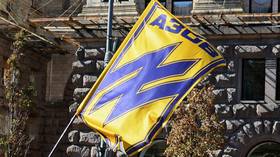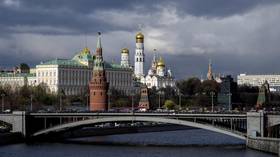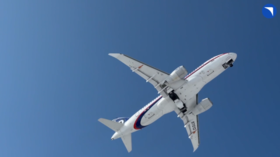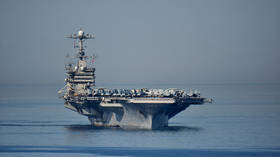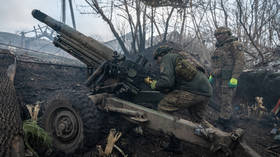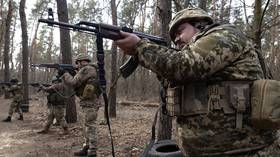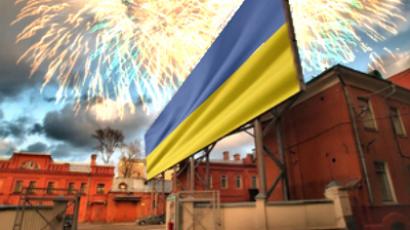Sailing the roughest seas for salvation: WWII Arctic convoys remembered
During WWII, the US and UK supplied the Soviet Union with millions of tonnes of vital supplies. The lifeline stretched through the Arctic region – the harshest sailing route.
Convoys of ships loaded with thousands of tanks and aircraft, along with other supplies for the front, sailed in rough and icy waters constantly under threat from German submarines.
Ahead of the Victory Day anniversary, Russia has decorated British veterans of those convoys. They are survivors of what Winston Churchill called “the worst journey in the world.” Between 1941 and 1945, they repeatedly made the perilous journey from Britain to Murmansk and Arkhangelsk to deliver vital supplies for the Soviet Union’s struggle against Hitler’s invading armies.
Albert Wilson, an Arctic Convoy veteran, remembers, “I think the most difficult thing to try to convey to people the tension, because if you can imagine being on deck knowing that somewhere out there, there was someone, but you couldn’t see them because they were submarines and at any time a torpedo could come and hit you or one of the ships you were protecting.”
We had tremendous seas as you know, and the biggest roll we did was 47 degrees, and I was on the bridge holding on to the compass pinnacle and my feet were off the ground, and that was a 10,000 ton ship! And then it started to come back up slowly and we breathed a sigh of relief,” says Robert Sutton, Arctic Convoy veteran.
Between August 1941 and the end of the war, a total of 75 convoys made the perilous journey to and from northern Russia, carrying four million tonnes of supplies, including tanks and aircraft for Soviet forces fighting the German Army on the Eastern Front. Sailing around Scandinavia into the icy Barents Sea, the convoys came under constant attack from U-boats and the Luftwaffe. Half or more of the ships in the convoy could be sunk before safety was reached. They were the roughest seas the sailors had ever seen.
John Seares, an Arctic Convoy veteran, says, “They were just coming towards us like tower blocks, and I thought we were never going to get through this, but we did, and as we hit the waves you could hear the screws out of the water, turning, because you have to bear in mind, 14,000 tonnes, just lifted out of the water as if it was nothing.”
Another veteran of the Arctic lifeline, Arthur Burnett, remembers, “In the water you’ve only got a few minutes to survive, and the water was coming over, you know, all the time, with waves 17 meters tall, you’re up and down and you’re doing this all the time, so it was very dangerous – you had to have a rope on the deck, you have to hang on to a rope because otherwise you get swept overboard.”
HMS Belfast, now moored at Tower Bridge in London, spent most of 1943 in the icy waters of the Arctic. She led the way in defending the Arctic convoys, with the most modern weaponry and technology of the time. But for the 900 men aboard the huge ship almost the length of two football pitches, conditions were harsh and cramped. And on their freezing missions fraught with danger, they faced the constant threat of German attack as they battled the elements to help keep open vital supply lines to the Soviet Union.
The seamen had just 50 centimeters to hang their hammocks, and spent much of their time chipping ice off the outside of the ship, to prevent her from being thrown off balance. Altogether, more than 100 ships were sunk and nearly 3,000 servicemen lost their lives.
To mark the 65th anniversary of the end of the war, Arctic Convoy veterans are receiving a medal from Russia. The irony of this presentation is that the veterans are more widely honored and acknowledged by Russia than they are by their own country.
Francis Norman Goodwin, Arctic Convoys veteran says, “It took us until just about a year ago for the British government to recognize and give us a little medal. It wasn’t even gazetted, but the Russians have always been very appreciative right from the beginning. But that’s the British government. The British government has never supported its armed forces in peace time…..never has.”
Russia’s ambassador to the UK, Yury Fedotov, says his country is not trying to compensate for those shortcomings. “We are doing what we believe it is moral to do and of course the fact that this whole Arctic Convoys were not recognized as a separate military operation during the war, it’s an old history which is rooted in the Cold War. I think now we have to look forward, not to the past,” the ambassador says.
Russia is planning another presentation for 2015, but these veterans are all over 80, and time is no longer on their side. It is important, they say, that the younger generation gets to hear of their sacrifice – to keep the memory, at least, alive.



